#invasive insect
Text
Invasive species of insects has impacted Mule Orchids and other types of orchids on Florida's west coast
Hurricane Irma in 2017 some Mule Orchids with storm surges but it killed off invasive insect species more leading to more healthy mule orchid population
Named Trichocentrum undulatum this is a study on the habitat of Mule Orchids.
Our study indicates that the Florida population is under high extinction risk and most populations in the core range show less interannual variability, but, with the exception of one population, are also in decline. The peripheral population experienced higher herbivory damage than did the core populations.
#scientific research#science news#biodiversity#biology#environmentalism#conservation#orchids#florida#plants#invasive insect#endangered species
5 notes
·
View notes
Text
The Argentine ant, Linepithema humile, formerly Iridomyrmex humilis, is an ant native to northern Argentina, Uruguay, Paraguay, Bolivia and southern Brazil! This invasive species was inadvertently introduced by humans on a global scale and has become established in many Mediterranean climate areas! Argentine ants are significant pests within agricultural and urban settings.
Wizardly Funfact: You most likely know of fire ants, but if you live in places where Argentine ants have invaded, you most likely have seen them many times! The absence of aggression within Argentine ant colonies was first reported in 1913 by Newell & Barber, who noted "…there is no apparent antagonism between separate colonies of its own kind". Later studies showed that these "supercolonies" extend across hundreds or thousands of kilometers in different parts of the introduced range! In fact, these continental supecolonies are believed to extend into one giant global supercolony! The enormous extent of this population is said to be paralleled only by human society!
“While this blog is not going to usually explain ways to kill the animals it features, it takes exceptions for invasive species that can truly be a problem (even if they are cool to learn about). Due to their nesting behavior and presence of numerous queens in each colony, it is generally impractical to spray Argentine ants with pesticides or to use boiling water as with mound building ants. Spraying with pesticides has occasionally stimulated increased egg-laying by the queens, compounding the problem! Pest control usually requires exploiting their omnivorous dietary habits, through use of slow-acting poison bait, which will be carried back to the nest by the workers, eventually killing all the individuals, including the queens. If you do this, be sure your targeting Argentine ants, not native ants to your area!”
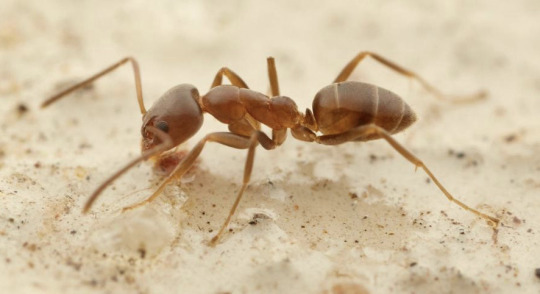

#nerdywizardmustdie#bugs#wizard#wizardposting#ants#argentine ants#invasive species#invasive insect#insects#nature
1 note
·
View note
Text
EU takes Ireland to court over failure to protect nature
The European Commission has sued Ireland in the European Court of Justice for failing to enforce laws protecting against “invasive alien species”.
These are plants, animals and insects that are not native to the region and can cause huge damage to local populations by preying on them, carrying disease or competing for food. They can also have a devastating impact on fisheries, agriculture and forestry and are estimated to cost the EU economy €12bn a year.
Invasive species can be introduced deliberately, accidentally or recklessly, but EU member states must have internal rules and penalties in place to ensure the problem is taken seriously.
Read more HERE

#world news#world politics#news#europe#european news#european union#eu politics#eu news#eu law#ireland#nature#nature preserve#environment#invasive species#invasive plants#invasive insect
0 notes
Text
Spotted Lanternfly Invades Illinois: The Latest News
https://headlinehorizon.com/Science/Wild%20Nature/693
Illinois becomes the latest state to uncover a sighting of the invasive spotted lanternfly. Find out more about the threat it poses to plants and how residents can help combat this pest.
1 note
·
View note
Text
What You Need To Know About the Spotted Lanternfly
What is the spotted lanternfly? If you live in Pennsylvania, you have probably already seen this insect. The spotted lanternfly (lycorma delicatula or SLF) is an invasive species native to China and Southeast Asia.
The pest was discovered in Pennsylvania in 2014, specifically Berks County, and has spread throughout Pennsylvania and neighboring states: north to Massachusetts, south to North Carolina, and west to Indiana and Michigan (See the Spotted Lanternfly distribution map for the mid-Atlantic area). The spotted lanternfly feeds on and damages many different plant species.
Many homeowners have reported sightings and damage from this pest, both direct damage by feeding and secondary damage due to excessive sooty mold formation on lanternfly excrement (honeydew). As part of our series on invasive insects, here is what you need to know and what you can do if you spot the colorful insect around your property.
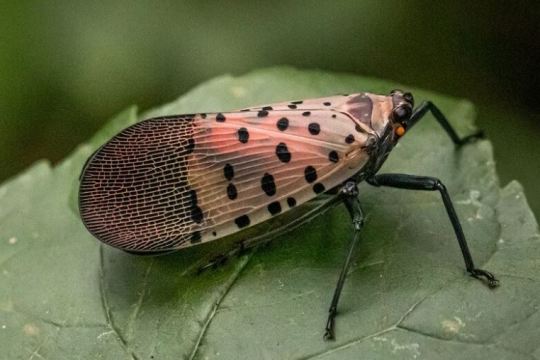
What You Need to Know About the Spotted Lanternfly
As of 2023, the spotted lanternfly is reported to be found in 51 Pennsylvania counties and can build to astounding numbers when left unmanaged. While many Pennsylvania residents have spotted this invasive species on their landscapes, we have some information to help those who want to keep their landscape free from invasive insects.
Appearance
Adult spotted lanternflies can be identified by their coloration and bodies. The insect has grayish wings with black spots; the tips are black and gray, while the bodies are black. When flying, spotted lanternflies will show vibrant red hind wings. Adults are around 1 inch long and a half-inch wide with wings folded. They can jump several feet when startled or approached.
You can also identify the pest via their egg masses or nymph stage. Egg masses are typically found on tree bark on the underside of scaffold branches and occasionally on other smooth surfaces such as rocks, outdoor furniture, and even vehicles. The mass is usually around 1 inch long and a half to three-quarters of an inch wide, with a gray-brown, mud-like covering.
Spotted lanternfly nymphs are much smaller than adults, only about 1/8 to 1/2 an inch long (depending on instar: a phase between two periods of molting in the development of an insect larva or other invertebrate). However, nymphs have distinct coloration: initially black with white spots and wingless, developing red patches/red patches and white spots as they mature.
Behavior & Problems
Spotted lanternflies feed on plant sap, and at a high population, this can cause significant damage to an area’s plant life. While known to feed on over 70 different plants, spotted lanternflies have strongly preferred the tree of heaven (ailanthus altissima), grapevines, maple trees, black walnut, birch, willow, and styrax.
Feeding on tree and plant sap can cause wilting, leaf curling, and dieback. In addition, as the SLF feeds on plant sap, the insect excretes a sugary substance called “honeydew,” which can attract bees, wasps, and other insects, and promotes the growth of sooty mold, which causes further damage to plants.
Here are the months each life stage occurs to help you better identify the plant pest on your property.
Egg masses: The invasive pest usually lays eggs from September to November, and lanternflies spend the winter as eggs.
Nymphs: Nymphs will first hatch around May to June and mature until around July to September.
Adults: July to September is when most spotted lanternflies have matured into adults; mating and egg-laying can continue until December.
The insect has become so prevalent that Pennsylvania has put affected counties under quarantine to stop the movement and slow the insect’s spread to new areas within or out of the current quarantine zone. The quarantine involves traveling and transporting outdoor items.
What You Can Do
If you see any spotted lanternfly or signs of its damage on your property, contact Burkholder Plant Health Care (PHC). Burkholder PHC treats for spotted lanternflies as part of our plant health care program. Our plant health care program emphasizes proper diagnosis and precise treatment, using only state-of-the-art, research-backed methods and equipment. We also utilize various pest management and control processes to protect your landscape from invasive, harmful pests.
Additional Spotted Lanternfly Resources
For more information about spotted lanternfly issues in Pennsylvania, you may wish to visit the following resource links.
Cooperative State Program Homepage
Cooperative State Program Map
Pennsylvania Quarantine Details/Updates
Pennsylvania Quarantine Map
Mid-Atlantic SLF Distribution Map
Contact Burkholder Brothers for Plant Health Care Services
If you want to keep your landscape beautiful, healthy, and free of spotted lanternfly, contact Burkholder PHC for a consultation. Our team of plant health care professionals has decades of experience helping homeowners keep their landscapes as healthy and vibrant as possible. In addition, we have up-to-date knowledge of the latest plant health care methods, from pest control to soil care and more. For more information on our services, contact us today.
Blog is originally published at: https://www.burkholderphc.com/what-you-need-to-know-about-the-spotted-lanternfly/
It is republished with the permission from the author.
0 notes
Text
How Non-Native Plants Are Contributing to a Global Insect Decline
The impact of introduced plants on native biodiversity has emerged as a hot-button issue in ecology. But recent research provides new evidence that the displacement of native plant communities is a key cause of a collapse in insect populations and is affecting birds as well...
#non-native plants#invasive species#environment#conservation#insect decline#insect#insects#entomology#biodiversity#animals#nature#botany#plants#non-native invasive species
1K notes
·
View notes
Text

Bug of the Day
Spotted lanternflies are taking over my life...
#spotted lanternfly#SLF#lanternfly#invasive species#insect#Hemiptera#Fulgoridae#planthopper#Fulgorid planthopper#Lycorma#Lycorma delicatula#bug#BotD#bug of the day
284 notes
·
View notes
Photo
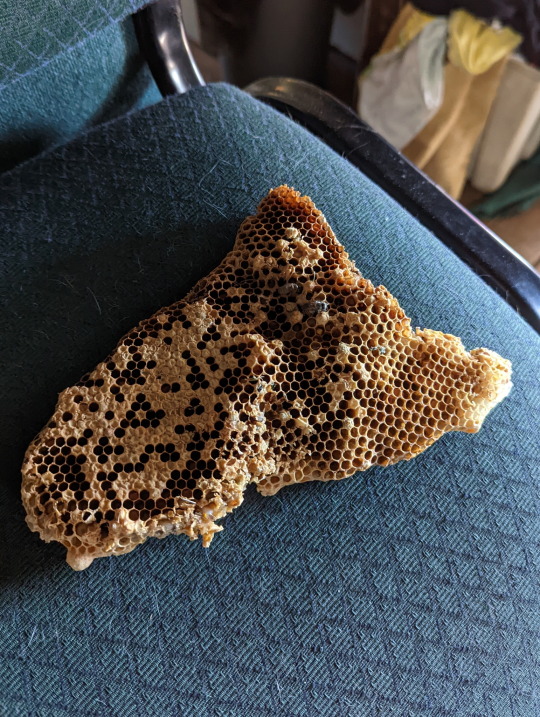
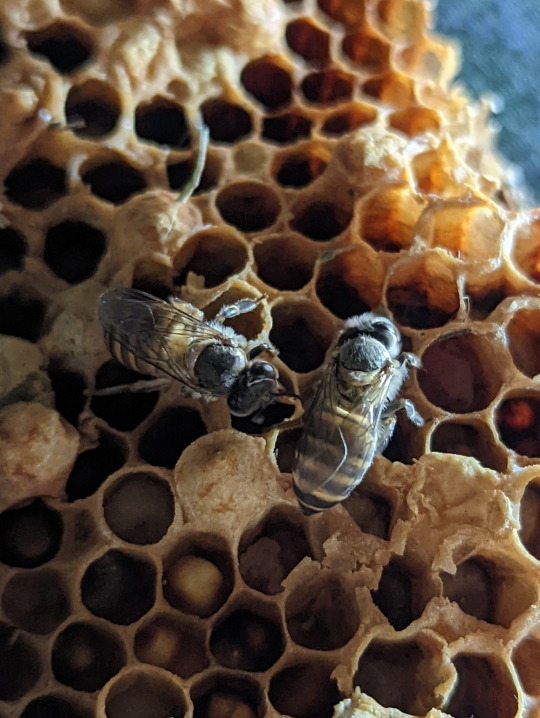
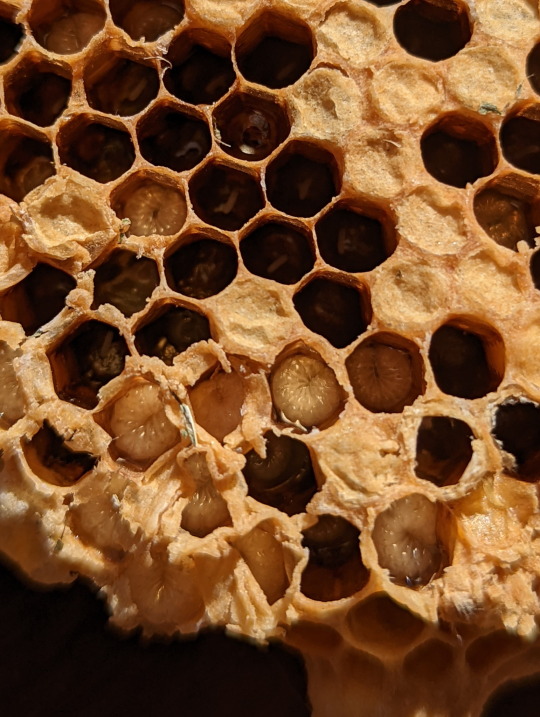
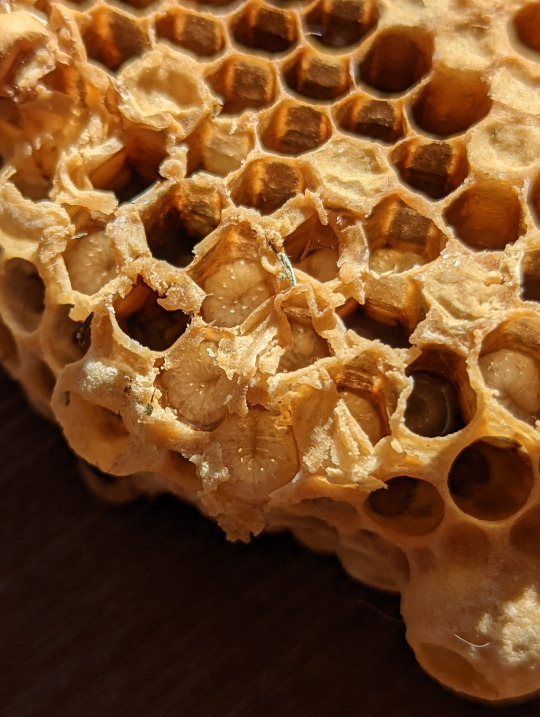
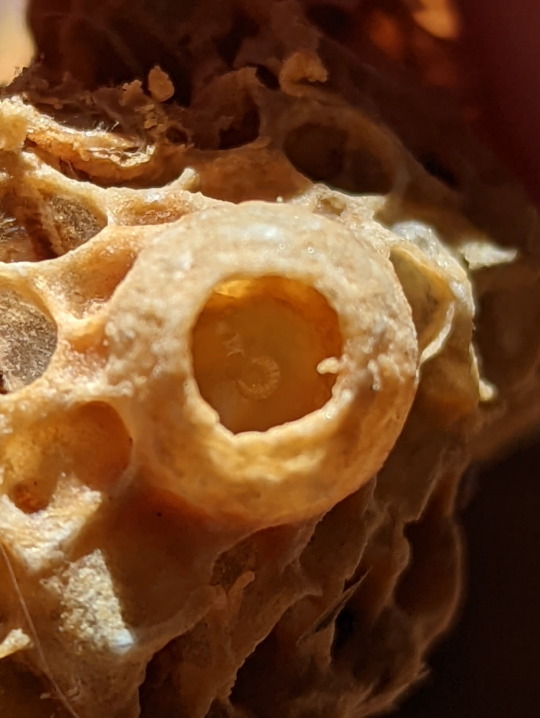


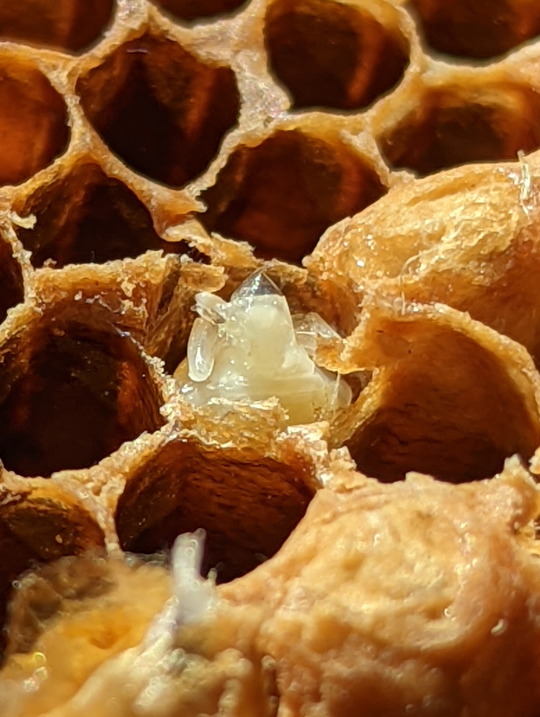
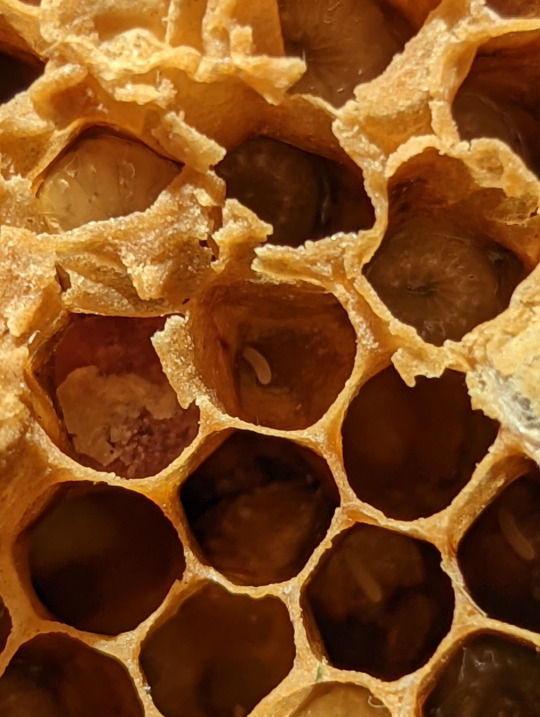
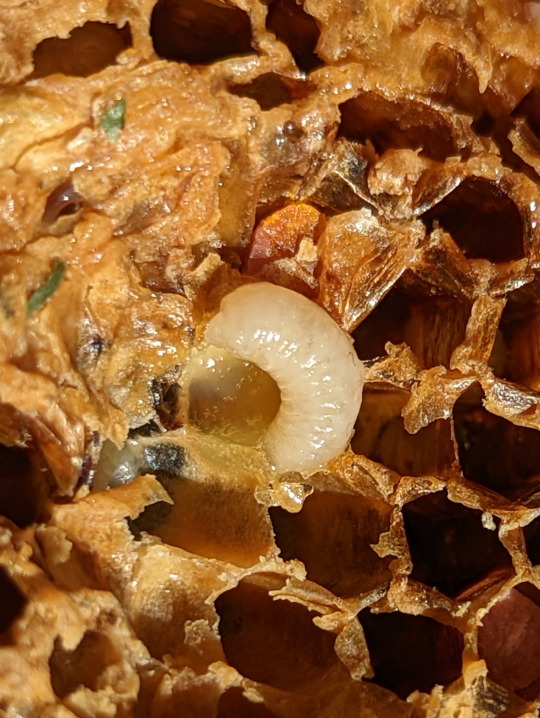
Nest of the Asian Honeybee
Here we have the poisoned nest of the Asian Honeybee (Apis cerana). If you’re wondering why the nest was poisoned, it’s because this species is actually quite damaging to this area. The Asian Honeybee not only leaves in competition with native bees over nesting areas and food, but they may also carry a certain nasty mite known as the ‘Varroa mite’ (genus Varroa), which can be detrimental to European Honeybee populations (Apis mellifera) (1).
Lets take a closer look at this nest shall we. First we’ll start off with the eggs. You can see an egg inside a brood cell in picture 9. The eggs are very small, and take about three days to develop. After which the fat little larvae emerge, curling up and waiting to be fed by the worker bees. When the larva becomes large enough, the brood cell will be sealed, so the larva’s pupation will be undisturbed. The adult bee will chew its way out of the cell after emerging from the pupae (2).
You can tell which brood cell belongs to which kind of bee based on its appearance. The drones have a distinctly dome-shaped cap with a large pour in the center (pic. 7). Then, of course, there’s the queen’s brood cell, which is large, round and on the edge of the nest (pics 5-6) (3).
When it comes to this species, it’s important to stay informed about the ways in which they are damaging for the environment.
Source (1)
Source (2)
Source (3)
Apis cerana
14/07/22
#Apis cerana#Asian Honey Bee#Apis#Cavity-nesting Honey Bees#Honey Bees#Apini#Anthophila#Bees#Hymenoptera#Varroa#Varroa Mites#Acari#Mites#invasive species#bugs#bugblr#bugs tw#bug#insects#insecta#insectblr#insects tw#entomology#insect#Arthropods#Arthropoda#beehive#hives#nests#invertblr
598 notes
·
View notes
Text


If you live in the northeast United States, then you’ve probably seen or at least heard of these guys. The Spotted Lanternfly. Or Lycorma delicatula.
They’ve been rapidly expanding and growing in population and while their presence is too new to know the exact impact they have on our native flora, they seem to pose a major threat to the apple and grape industries. They also excrete a honeydew that leads to mold growth on the plants they feed on.
So the states have put out this message to the public: “If you see it, smush it.”
And while I understand the need to be ruthless in invasive species response, I hope that people aren’t associating all lanternflies with this “bad bug” label.
So right now I’d like to showcase some cool/interesting species of lanternflies (the family name is Fulgoridae) in their native habitats :)

Peanut-Headed Lanternfly (Fulgora laternaria)

No Common Name (Phrictus diadema)
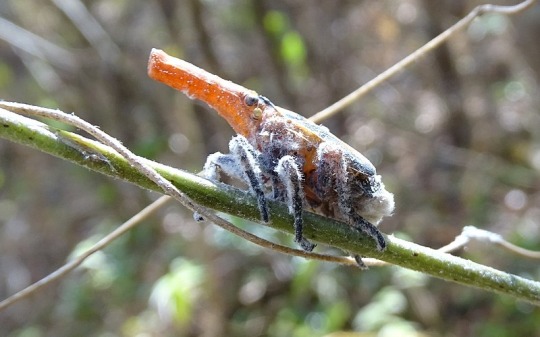
Malagasy Lantern Bug (Zanna madagascariensis)

No Common Name (Pyrops delessertii)
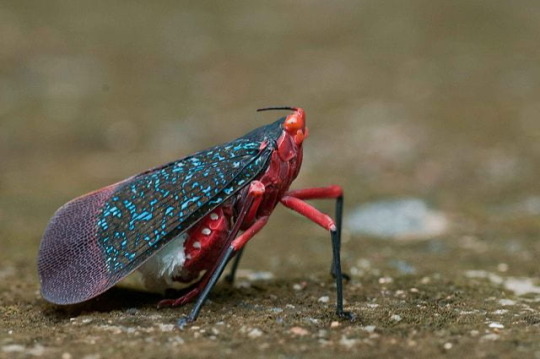
No Common Name (Kalidaysa lanata)
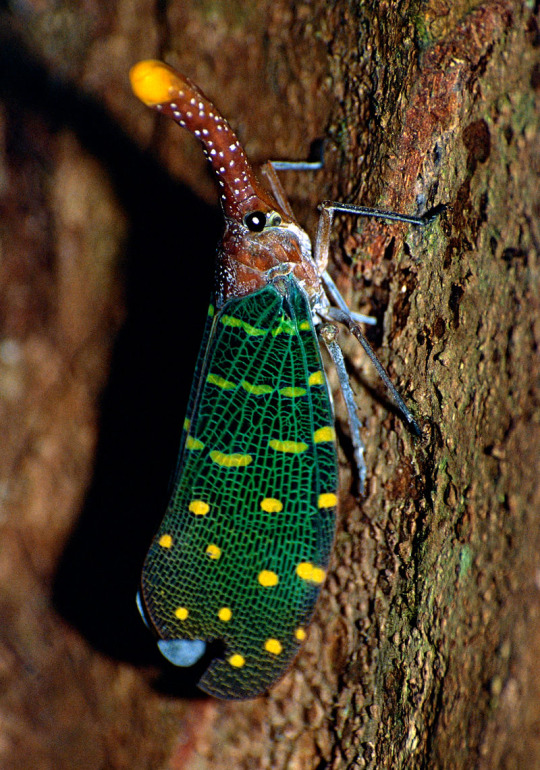
No Common Name (Pyrops intricatus)
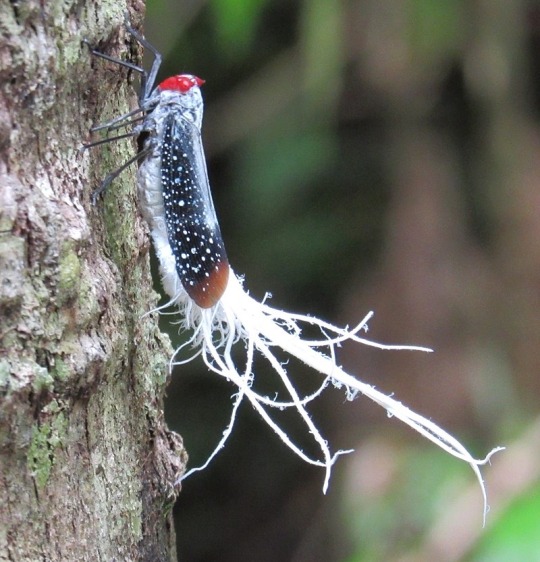
Wax-Tailed Planthopper (Lystra lanata)
Fulgoridae has over 500 species making it a fairly large hemipteran family, please go on a Wikipedia dive to look at all of them. Happy bugging :))
#insects#entomology#bugs#lanternflies#spotted lanternfly#bugblr#planthopper#ecology#invasive species#hemiptera#pretty pretty bugs#i love them all
158 notes
·
View notes
Text
What Are Mosquitoes Good For?
Originally posted at my blog at https://rebeccalexa.com/what-are-mosquitoes-good-for/
Now that the weather has cooled down over much of the United States, insects have died back or gone into hibernation for the winter. So you may be tempted to be glad that the mosquitoes have disappeared for the time being. Maybe you even wish they wouldn’t come back next year! After all, they’re just mosquitoes, which annoy us and spread diseases, right? What are mosquitoes good for, anyway?
Much to the surprise of a lot of people, they actually have some pretty important ecological functions, and your local ecosystem would likely suffer if the mosquitoes were all exterminated. So today, I am going to be a mosquito apologist.
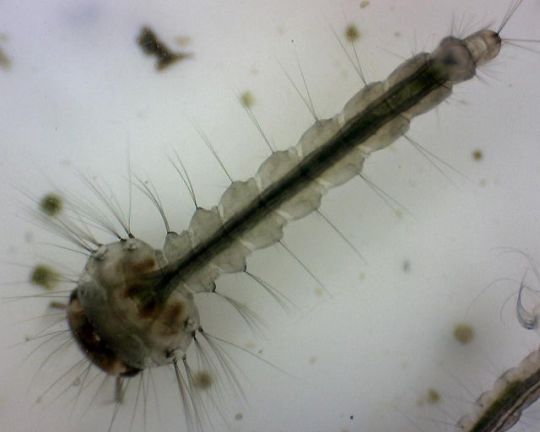
What Are Mosquitoes Good For? Food!
You may have seen hundreds or even thousands of mosquito larvae swimming in a pond or other fresh water. Perhaps you thought every single one of them came to find you after they became adults! They certainly are prolific; some species can lay as many as 300 eggs at once.
But this isn’t just because they want to have more young to annoy you, generation after generation. Rather, it’s because a lot of mosquitoes end up eaten before they even get a chance to reproduce. As eggs and larvae, they’re food for fish, amphibians, and aquatic insects and other arthropods. Once they take to the wing, birds and bats become major predators, as do adult dragonflies and other winged insects, plus spiders that catch them in their webs. While a single bat might not actually eat 1000 mosquitoes in a night, all those various predators do take a significant chunk out of the mosquito population.
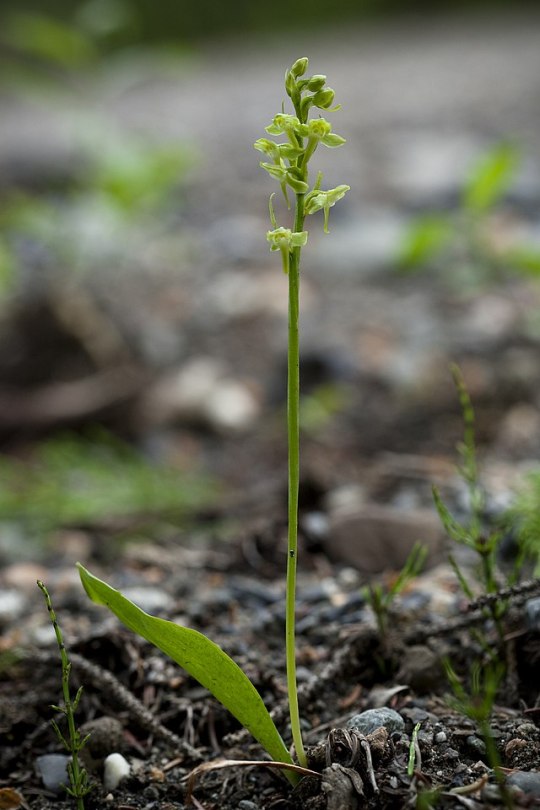
Platanthera obtusata is just one of many orchids that rely on mosquitoes for pollination.
What Are Mosquitoes Good For? Pollination!
Believe it or not, most mosquitoes aren’t out for your blood! The majority of mosquito species are entirely vegetarian; it’s only a few in which the females seek out blood to help produce eggs. Most mosquitoes drink nectar or plant sap, and in the pursuit of the former they play a vital role in pollinating the flowers they visit. Goldenrod and orchids are just two examples of groups of plants pollinated by mosquitoes. And while mosquitoes might drive Alaskans buggy, they are vital for pollination during the short Arctic summer.
What Are Mosquitoes Good For? Keeping Things in Check!
Mosquito larvae spend anywhere from a few days to a few weeks in the water where they hatched. They feed on a variety of bacteria, algae, and other microorganisms. Because they have a lot of growing to do, and need to prepare for their final molt to adult form, they have to eat a lot! That means they help keep their prey species’ populations in check. An overgrowth of algae, for example, can reduce the amount of sunlight that submerged plants have access to, and as the algae dies it increases the amount of nitrogen in the water. By constantly grazing on algae, mosquito larvae are helping to prevent these sorts of ecological imbalances.
What If We Made Mosquitoes Go Extinct?
So what are mosquitoes good for? Quite a lot, apparently! However, there’s no denying some species have also caused us a lot of grief. There have been calls to exterminate all mosquitoes, or at least every species that could ostensibly cause us problems through disease transmission. And to be sure, I don’t want to see people dying of malaria or West Nile virus, especially as these diseases often hit disadvantaged populations harder, with fewer resources for treatment. But it’s something where we need to weigh the consequences carefully.
What would happen if there were suddenly no more mosquitoes? Sure, the animals that prey on them could potentially find other sorts of food, but there would be an upset in the food web as the predators put more pressure on remaining prey species, which could lead to some of those species become locally endangered or even extirpated. Or the predators might drop in number as they failed to find enough food. Either way, getting rid of all the mosquitoes would have a negative impact on the food web.
Finally, and possibly most importantly–we may not fully understand the ecological roles mosquitoes have. As I wrote recently, ecosystems are incredibly complex networks of relationships among thousands of species, and for centuries we have been eradicating entire species without any thought as to what long-term effects their loss might have on their native ecosystems.

However, that brings up another point: the fact that there are invasive mosquitoes. Invasive species wreak havoc on ecosystems they’re introduced to, and it just so happens that one of the most notorious disease-spreading mosquitoes, Aedes aegypti, is invasive across much of the tropics, as well as subtropical and temperate areas worldwide. Spread through the slave trade, this mosquito is a prime vector for yellow fever, dengue fever, Zika, and several other pathogenic diseases affecting humans. Its cousin, Aedes albopictus, is also a disease vector and is more cold-hardy, meaning it could spread even further.
What’s the answer? Well, historically people just drained wetlands, much to the devastation of the native ecosystems there. More recently, the widespread and indiscriminate use of pesticides like DDT also knocked back mosquito populations (at least temporarily), but also killed off many other animals both directly and indirectly, to include nearly wiping out multiple raptor species due to eggshell thinning. Moreover, mosquitoes have developed resistance to pesticides, making them a less useful tool overall.
More recent innovations to control specific invasive mosquitoes hold some promise. A. aegypti, for example, has been genetically modified in labs to create a strain known as OX513A. Not only do the offspring die before they can reproduce, even if a OX513A breeds with a wild mosquito, but the offspring also apparently lack resistance to some pesticides. Biological control using Wolbachia bacteria inhibits A. aegypti‘s reproduction, and also makes them unable to carry certain diseases such as Zika and dengue fever.
So it would appear that the fight to control invasive species also has the bonus effect of stopping the mosquitoes most likely to give the rest a bad name.
Did you enjoy this post? Consider taking one of my online foraging and natural history classes, checking out my other articles, or picking up a paperback or ebook I’ve written! You can even buy me a coffee here!
#mosquito#mosquitoes#insects#invertebrates#arthropods#wildlife#wild animals#animals#entomology#biology#ecology#invasive species#nature#natural history#bugs#long post#environment#environmentalism#conservation
822 notes
·
View notes
Text
There is a very large bee-like creature trapped in my ceiling right now and I do not know what to do about it
It walks over the flourescent light covers once in a while then disappears behind the ceiling tiles
What are you. How did you get in here
How do I get you out without killing you or being stung
Fuuuuuuck
#we had a nest of carpenter bees in our outer wall a few years back and had to have it removed because they were damaging the house#i am terrifed that this is a queen looking for a new nest#but what weirds me out is it's just one? don't they usually travel in like. swarms?#i am not educated enough on bees for this#bees#bugs#insects#mod post#i have homework i cannot be dealing with bee invasion rn
298 notes
·
View notes
Photo

@still-an-uniroic-fangirl submitted: not a great picture but this moth (?) found in [removed] (please remove location) has patches of scarlet under its wings only visible when it flies. i’ve only ever seen one or two
It’s a spotted lanternfly, which is invasive. Check your local agricultural or wildlife or natural resource department websites to see if they’d like you to report sightings. Usually it’s a simple online form. But it may depend on which county you live in and how established they are or aren’t there already.
REMINDER: Negative comments about bugs on my posts will get you blocked. Keep them to yourself.
136 notes
·
View notes
Text
You know I think it's as important to teach basic compassion for animals as it is teaching about invasive species. There's this video of some person stomping on a lantern fly and then setting it on fire and idk maybe you don't actually care about the ecosystem or whatever you just want some justification to be cruel to animals you deem disgusting and useless but that's just me
#shortext#animal cruelty#if people talked about those fuzzy cute invasive species the way people talk about insects and sparrows theyd get torn to shreds#because yall are massive hypocrites#'but cats and foxes are cute can't we leave them to decimate the australian bird population 🥺' die#like the moment someone suggests culling species that are conventionally cute people go fucking rabid
116 notes
·
View notes
Text
World's 'Rarest Insect' Makes Stunning Comeback After Near-Extinction : ScienceAlert
63 notes
·
View notes
Text

By SREEJITH VISWANATHAN - Own work, CC BY-SA 4.0
#hammerhead worm#broadhead planarian#land planarian#planarian#worm#these are invasive in the u.s. canada and europe#but i'd still like it if we didn't go too wild with the “ahhh kill it” in the notes. it's not like i can stop you though#this guy's portrait was taken in asia where he's supposed to be 👍#for blacklist:#bug#insect
40 notes
·
View notes
Text

ウスキツバメエダシャク
新成虫かな。翅の淡い黄色と白い体が美し過ぎる。
R5.4
西表島
#ウスキツバメエダシャク#エダシャク#シャクガ#蛾#生き物#昆虫#写真#自然#虫#nature#animal#photography#entomology#bugs#arthropod#invasive species#insects#moths#moth#butterfly#西表島の自然
171 notes
·
View notes